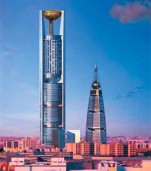Interactive Aerodynamic Design of Supertall Buildings

As modern tall and supertall buildings (often of non-orthodox architectural forms) are becoming taller and more slender they also become more sensitive to dynamic windinduced excitation, especially in the cross-wind direction which is often driven by vortex-shedding excitation. The importance of such crosswind excitation and its intimate relation to the architectural form of a tall building is well known [Shimada et al. (1989), Hayashida and Iwasa (1990), Dutton and Isyumov (1990), Miyashita et al. (1993), Kareem et al. (1999), Tamura et al. (2011)] and has now also been considered in the current draft of the new Chinese Building Code (GB 50009-201×). It is however difficult to intuitively predict the impact of building form on vortexshedding, and so lateral wind loading and wind-induced accelerations, which are often critical factors for the structural efficiency of a tower, cannot always be appropriately considered and addressed.
In the last decade, technical developments in the design and construction of highfrequency force balance (HFFB) models have allowed compound wind tunnel model / balance frequencies in the excess of 100Hz to be achieved even for supertall and very slender buildings. At typical frequency scales of the order of 1:100, the stiffness of these models made testing speeds in the excess of Reynolds number ~2x105 possible, while still retaining a very good separation from the full-scale structural frequencies of the tall building at the design wind speeds of interest.
Working together, the authors of this paper have carried out wind tunnel testing in the early stages of several tall buildings projects. This has enabled the risk in terms of wind forces and dynamics to be managed early on, but it has tended to be based on the approach of checking predetermined architectural forms for critical problems.
This work has shown to the team that it would be much more advantageous in terms of design progression to be able to run a series of interactive tests early in the design process and within a workshop environment where results can be produced almost in real time and, in reaction to this data, designs altered and re-tested. Ideally this would be carried out in a fashion similar to wind environment testing where the architect and other members of the design team can be directly involved.
The ultimate aim is to help define a process that ensures a better integration between the architectural form and the resulting structural design, which in turn allows for the shape of the tower to be developed on the basis of reducing the demand on the structure and therefore saving material by aerodynamically optimising the building form. In order to make such workshops possible, the authors of this paper have trialled a number of analysis tools and procedures to help make the data from such testing reliable and useful. Presented in this paper are a number of projects which have followed such a workshop approach and some initial details of an experimental and fully interactive workshop which has been carried out.
Full content of this issue you can read here
The full version of the article can be read in our printed issue, also you can subscribe to the web-version of the magazine
 Materials are courtesy of CTBUH
Materials are courtesy of CTBUH
Text: Stefano Cammell, Volker Buttgereit, George Keliris, Mike Sefton


